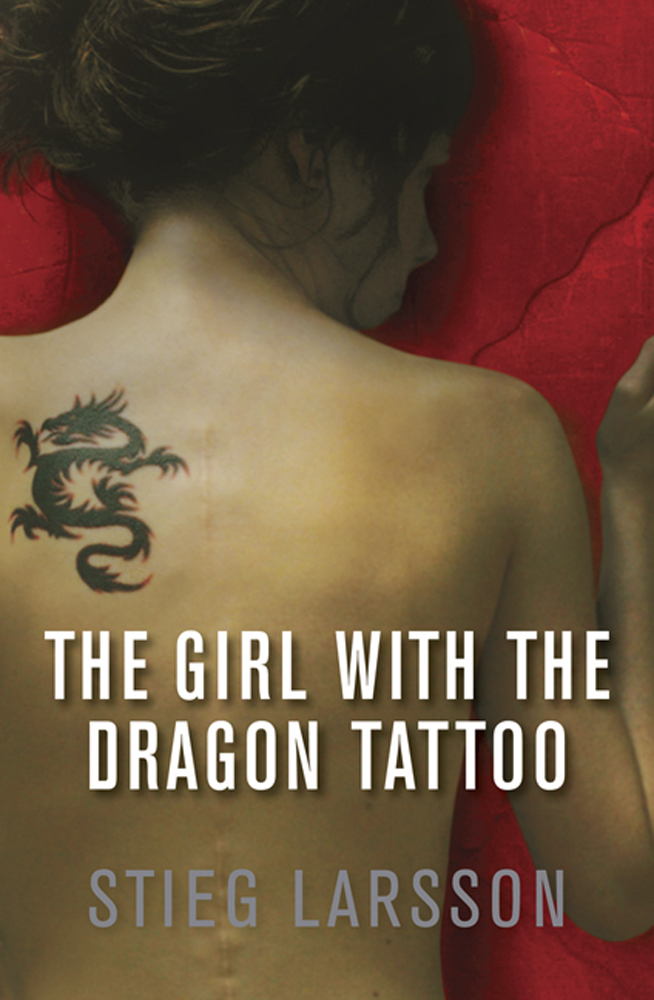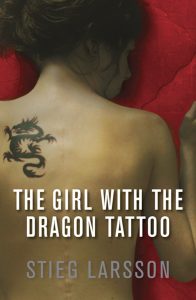I finished the last book with a sharp pang: I had read them all. There were no more to read. I felt a sense of loss.
Stieg Larrson simply wrote three of the most compulsively readable, engaging books I’ve read in decades. The characters were fantastic, complex and multi-dimensional and intriguing, flawed but heroic. I cared about Lisbeth Salander and Mikael Blomkvist. I liked them and I was rooting for them.
When I discussed the books with my mother, who reads continually, she said, “When Lisbeth got her revenge, I stood up and cheered!”
I could see my mother at her kitchen table with a cup of coffee, standing up to holler as Lisbeth took her vengeance. It’s that kind of novel. It moves you to your feet.
The books are suspenseful: the engine of the plot works robustly. I always look for that in a novel. Does the story move forward? Does it build suspense and tension? Yes, yes, yes for this trilogy.
One of my rules for writing novels is that every story is an argument for a specific value. The value at the heart of the Millennium trilogy is suggested by its original title “Men who hate women.” It has something to do with sexual politics, with the power dynamic between men and women, a power that, at its basest level, comes out of physical strength alone, without making reference to intelligence or character. But that’s at the most base, least evolved level.
Tiny, waifish Salander with her multiple piercings and autistic affect gives the lie to the importance of physical size. She is a trained fighter. She is a resourceful person with hidden gifts. She doesn’t give up and she takes her power into herself. She isn’t traditionally beautiful, she isn’t seductive or pleasing, and she doesn’t fit the stereotypical sitcom image of the good girl we all root for.
But we all root for her. She stays in the reader’s imagination for long after the back cover closes over the pages.
Contrast Salander’s complexity with the nauseating and stupefyingly stupid simplicity of the female character in “Fifty Shades of Gray,” who has a fictional life solely to dither about whether or not to let her naughty handsome billionaire boyfriend spank her. Oh yes, and to surprise herself by having orgasms. Lots of orgasms.
That female character was so insipid and forgettable that I’ve forgotten her name. I couldn’t bring myself to read more than the first half of the first book; the prose was embarrassingly badly written, appallingly badly written. It’s fascinating to me that the author is making so much money with such a pile of crap.
Don’t misunderstand, I had high hopes for “Fifty Shades” of silliness. Mommy porn? Sounded fun to me: I’m game! But the disappointment that I felt wasn’t that the novel was over, it was disappointment that prose this poorly written, and characters this vapid, and a plot this nonexistent, was being published so extravagantly. I would have welcomed well-written mommy porn that didn’t feature an inane female protagonist.
But this goes to show the power of my rule of novels: Every story is an argument for a value. The value behind “Fifty Shades” of mental retardation is that female orgasm is good. Oh, yes, yes Yes YES IT’S GOOD!
Women like that value $$. Duh.
Fortunately, there is a character like Lisbeth Salander to offset the rank idiocy of “Fifty Shades.” Lisbeth is the agent of her own sexuality. Lisbeth chooses her pleasures.
According to Wikipedia, Larrson witnessed the gang-rape of a young woman when he was young, and it haunted him. It led him into thinking deeply about gender relations, and The Girl with the Dragon Tattoo trilogy is a meditation on the power dynamics between the genders, and how men feel about women, especially strong women, women who defy traditional roles and categorizations.
Basically, insecure men want to hurt women they can’t control.
It’s not an accident that Blomkvist’s magazine profiles sex trafficking in the second book, “The Girl who Played with Fire.” Men who hate women see them as objects for their use.
At one point, I think in the last book, Larrson refers to Salander as ‘the girl who hated men who hate women.’ I’m paraphrasing because I was too caught up in the story to remember exactly, though I took note of that phrase. Lisbeth Salander personifies defiance of the approved female roles. She just isn’t going to be objectified.
So the trilogy was deeply pleasurable on many levels. It worked as a riveting story with characters who grabbed you and didn’t let go no matter what. It also worked on the intellectual level, with ideas that matter.
Read The Girl with the Dragon Tattoo trilogy. I recommend it. It will satisfy you and make you think, both at the same time.


